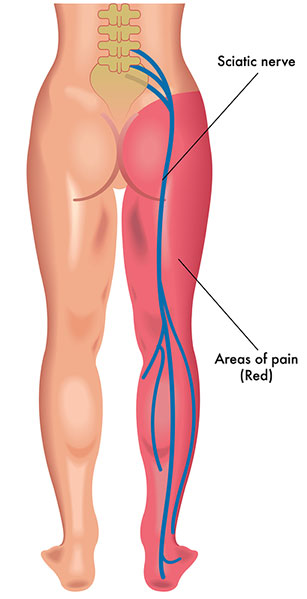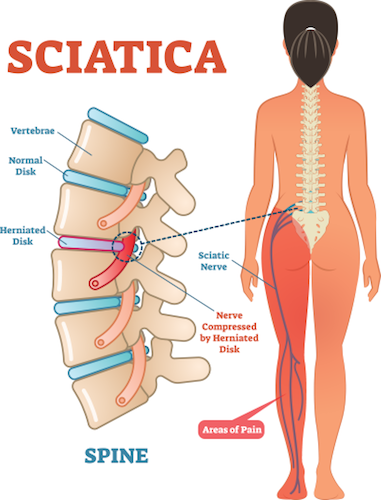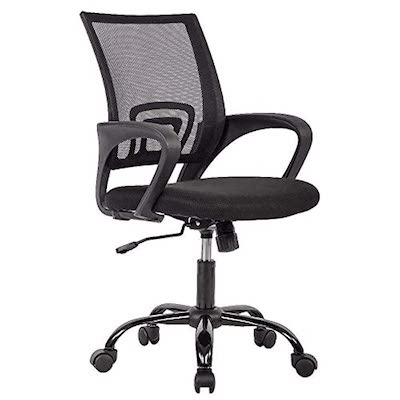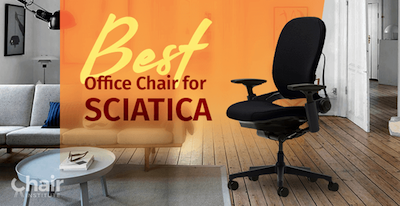What is Sciatica?
1. Run-through – Pain that radiates along the path of the sciatic nerve, which branches from your lower back through your hips and buttocks and down each leg is called Sciatica. Normally, only one side of your body is affected by Sciatica.
Most commonly Sciatica occurs when a disk is herniated, when there is a narrowing of the spine (otherwise known as spinal stenosis) or bone spur on the spine compresses part of the nerve. This may get cause of an inflammation, pain and frequently some numbness in the affected leg.
Though the pain connected to sciatica can be acute, most cases resolve without need of surgery in a few weeks. People who have acute sciatica that is connected to serious changes in bowel or bladder or they experience leg weakness might require a surgery.
Check out 8 best office chairs for Sciatica.

2. Symptoms – Pain that radiates from your lower, i.e.: lumbar spine to your buttock and down the back of your leg is the sign of sciatica. Through the pathway of the nerve, you may feel the discomfort nearly anywhere, though, it is more likely to follow a pathway from your lower back to your buttock and through the back of your thigh to the calf.
3. When to make an appointment with a doctor – Mild sciatica usually goes away over time. Instead of taking self-care measures, consider to call your doctor, especially if your attempts do not relieve your symptoms or if your pain lasts more than a week, is acute or progressively worsens. Get immediate medical care:
– If you experience abrupt, acute pain in your low back or leg and numbness or muscle weakness in your leg
– If you experience pain following a violent injury, such as a traffic accident
– If you experience trouble controlling your bladder or bowels
4. Causes – When the sciatic nerve is entrapped, usually by a herniated disk in the spine or by an overgrowth of bone, also known as bone spur, on the vertebrae Sciatica occurs. In more rare cases, the nerve can be damaged by a disease such as diabetes or compressed by a tumor.
5. Risk factors – Risk factors for Sciatica are considered as follows:
Age – Backbone changes related to age. Such changes are – bone spurs and herniated disks. These are the most usual triggers of sciatica.
Obesity – Excess body weight can contribute to the spinal changes that trigger sciatica, by increasing the stress on your spine.
Occupation – A job that requires you to drive a motor vehicle for long periods, carry heavy loads or to twist your back might play an important role in Sciatica, though, no definitive proof of this connection exists.
Extended sitting – People who sit for prolonged periods are more likely to develop sciatica.
Diabetes – This condition, which affects the way your body uses blood sugar, raise your risk of nerve damage.

6. Possible complications – Most people fully recuperate from sciatica, though, often sciatica can potentially cause permanent nerve damage if not treated. Look for instant medical help if you are experiencing:
– Sensation loss in the affected leg
– Weakness in the affected leg
– Loss of bowel or bladder function- It is not always possible to prevent Sciatica, and the condition may recur. The following can play a key role in keeping your back safe:
Try to exercise routinely – To maintain your back strong, pay special attention to your core muscles (the muscles in your abdomen and lower back that are essential for proper posture and alignment). Ask your doctor to advise particular activities.
Maintain proper posture when you sit. In order to keep normal curve of the small of your back, try placing a pillow or rolled towel there. Select a seat with good lower back support, armrests and a swivel base. Keep your knees and hips level.
Use good body mechanics. Rest one foot on a stool or small box from time to time If you stand for long periods. When it comes to lifting something heavy, let your lower extremities do the work. Move straight up and down. Maintain your back straight. Bend only at the knees. Hold the load close to your body. Avoid lifting and twisting simultaneously. if the object is too heavy or awkward, try to find a lifting partner.




